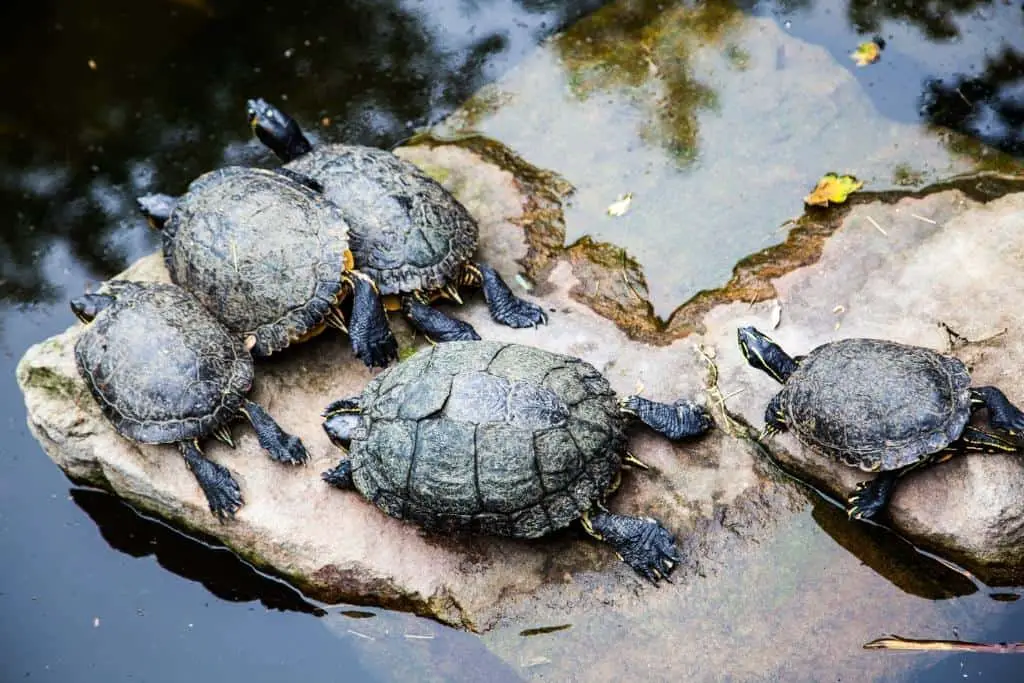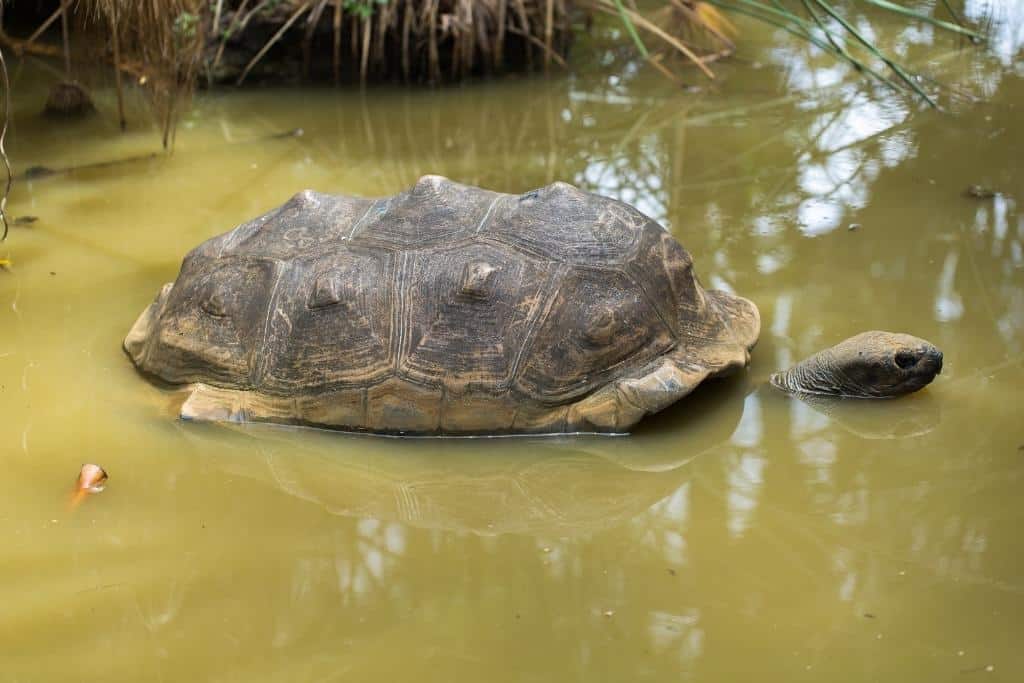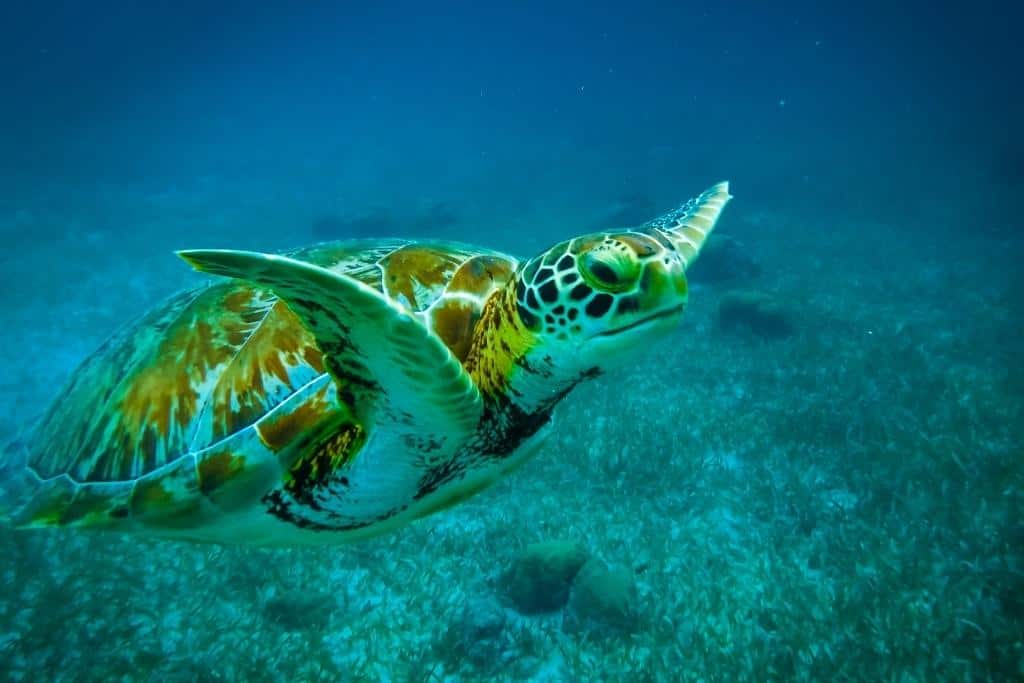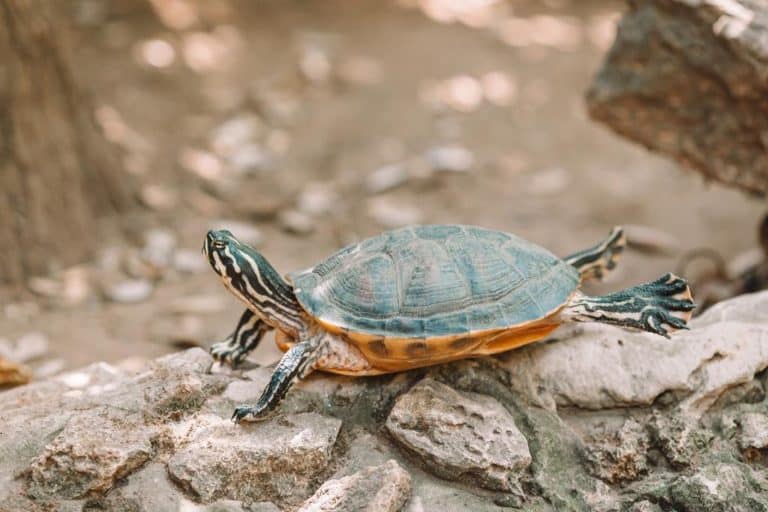Are Turtles and Tortoises the Same? What’s the Difference?
Unfortunately, the answer isn’t as simple as “Yes” or “No.” While there are some similarities, there are also some significant differences. Turtles and tortoises are both reptiles who belong to the Testudines order.
They both have a hard shell that protects their bodies and lay eggs on land. However, there are several key differences between the two.
- Turtles are primarily aquatic, meaning they spend most of their time in the water.
- Tortoises, on the other hand, are land-dwelling creatures and only enter water to bathe or cool off.
- Turtles also have webbed feet that help them swim, while tortoises have stumpy legs better suited for walking on land.
So, while there are some similarities between turtles and tortoises, there are also some important distinctions.
Are turtles and tortoises related?

Turtles and tortoises are members of the class Reptilia, which includes all of the reptiles with a shell.
The order is divided into two suborders: Cryptodira and Pleurodira.
Turtles are classified as Cryptodira, while tortoises are classified as Pleurodira.
The main difference between these two suborders is how they retract their heads into their shells. Cryptodira turtles can pull their heads straight back into their shells, while Pleurodira tortoises can only pull their heads sideways.
As a result, turtles and tortoises are different enough to be considered separate species. However, they are still closely related, thanks to their shared ancestry.
How to Identify turtle and Tortoise

Turtles live primarily in water, while tortoises live on land. As a result, they have different shells adapted to their lifestyles.
- Turtles have streamlined shells that help them to swim quickly through the water, while tortoises have a heavier carapace that protects them from predators on land.
- Turtles typically have webbed feet, while tortoises have stumpy legs with thick claws. These claws help them dig burrows where they can hide from the hot sun or predators.
Another difference between turtles and tortoises in their shells. Turtle shells are soft and flexible. This is because turtles need to move quickly in the water; tortoises have large, dome-shaped shells that protect them from predators.
Turtles lay their eggs in the water, while tortoises lay their eggs on land. This is because turtles need water to protect their eggs from predators.
Land-based tortoises are herbivores, while turtles can be both herbivores and carnivores.
Finally, turtles tend to be smaller than tortoises, with an average size of around 10 inches long. Tortoises can grow much more significantly, with some species reaching lengths of over four feet.
Are all Tortoises Turtles?

Tortoises are a type of turtle, but not all turtles are tortoises.
For example, box turtles and wood turtles are both types of turtle, but they’re not considered tortoises. That’s because they’re semi-aquatic; they spend part of their time in water and amount of their time on land.
So, if you’re trying to tell a turtle apart from a tortoise, the easiest way to do it is to look at where it lives. If it’s in the water, it’s a turtle; on land, it’s a tortoise.
How Long Can Turtles and tortoises Live?

It’s incredible to think about how long some creatures can live!
- Some tortoises can live up to 80 years, and some have even been known to survive for over 150 years.
- In contrast, turtles typically only live for 20 to 40 years.
Sea turtles have a slightly longer lifespan, averaging 60 to 70 years, but it takes them a while to reach maturity, around 40 to 50 years.
So if you’re looking for a long-term pet, a tortoise might be the way to go! Just be prepared for a commitment of several decades.
Who is better as a pet: Turtles or Tortoises?
When choosing a pet, there are many factors to consider. For some people, the decision comes down to which animal is more low-maintenance.
Others might choose based on which one will be more interactive or affectionate. And for some, the choice of turtle or Tortoise is simply a matter of personal preference.
Both turtles and tortoises can make excellent pets, but there are some significant differences to keep in mind.
Turtles require more maintenance than tortoises, which must be kept in a tank with filtered water.
On the other hand, tortoises can live quite happily in a simple enclosure with soil substrate. Regarding personality, turtles tend to be more active and playful, while tortoises are generally calmer and sedentary.
So, a tortoise might be the best choice if you’re looking for a low-maintenance and relaxed pet. If you want a pet that’s a little more active and interactive, a turtle might be a better option. Ultimately, the decision of which to choose is up to you!
Where do Turtles and Tortoises Live in the Wild?
Despite their distinct lifestyles, some habitats feature turtles and tortoises coexisting. One such place is the Galapagos Islands, where marine turtles and land tortoises can be found.
The island’s warm climate and a diverse landscape provide a perfect habitat for both types of animals. As a result, the Galapagos Islands are home to some of the world’s most exciting turtle and tortoise species.
What do turtles and tortoises have in common

Though they may look different, turtles and tortoises have quite a bit in common.
- They are both reptiles and cold-blooded animals with dry, scaly skin.
- Both animals lay eggs which they bury in the sand or mud to protect,
- Both have retractable heads (a helpful adaptation for protection against predators)
- They also both have shells, though the turtle’s shell is attached to its spine while the Tortoise’s shell is actually part of its ribcage.
Can tortoises and turtles live together?
Many believe that tortoises and turtles can’t live together because they have different temperature requirements.
- Tortoises, native to warmer climates, need a basking spot that stays between 80 and 85 degrees Fahrenheit.
- In contrast, turtles, native to cooler climates, need a basking spot between 70 and 75 degrees Fahrenheit.
However, this difference in temperature requirement is not as significant as it may seem. Tortoises and turtles can easily share a basking spot if it is set up correctly.
For example, if the basking spot is placed on the turtle’s tank’s warm end, both animals can stay comfortable.
In addition, many commercial reptile tanks come with built-in basking spots that can be used by both tortoises and turtles. As a result, there is no reason why these two animals can’t coexist peacefully.
Is a red-eared slider a turtle or a tortoise?
People often confuse whether a red-eared slider is a turtle or a tortoise. The answer is that it’s a semiaquatic turtle, which means it can live in water and on land.
These turtles get their name from the distinctive red stripe behind their ears, and they’re usually pretty easy to care for as pets.
Red-eared sliders are popular choices for people who want to keep a turtle as a pet, but they’re also essential animals in the wild.
Unfortunately, they’re becoming increasingly threatened due to habitat loss and pollution, so we must do what we can to protect them.





